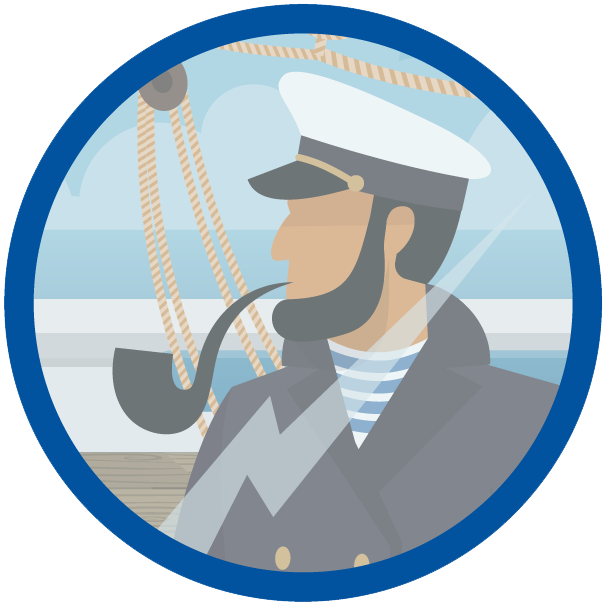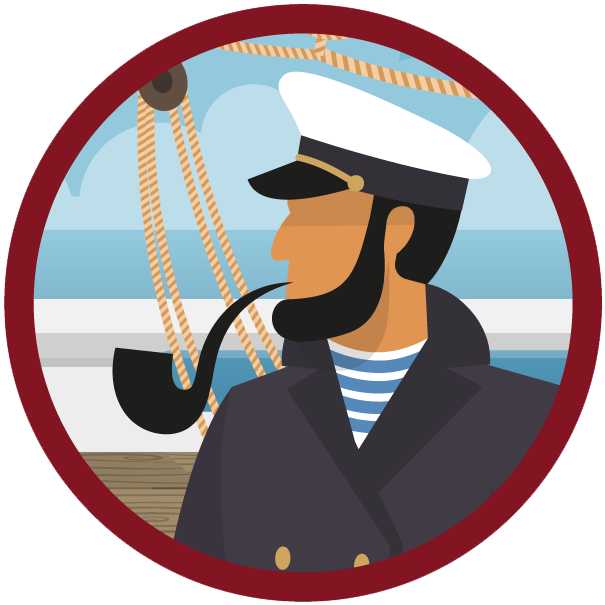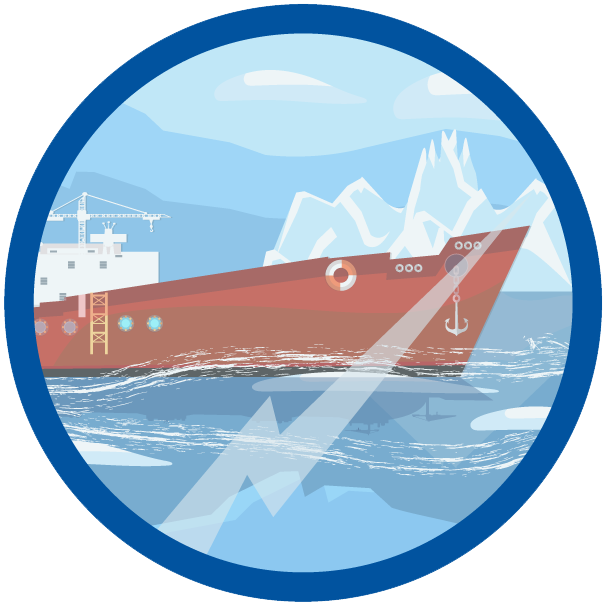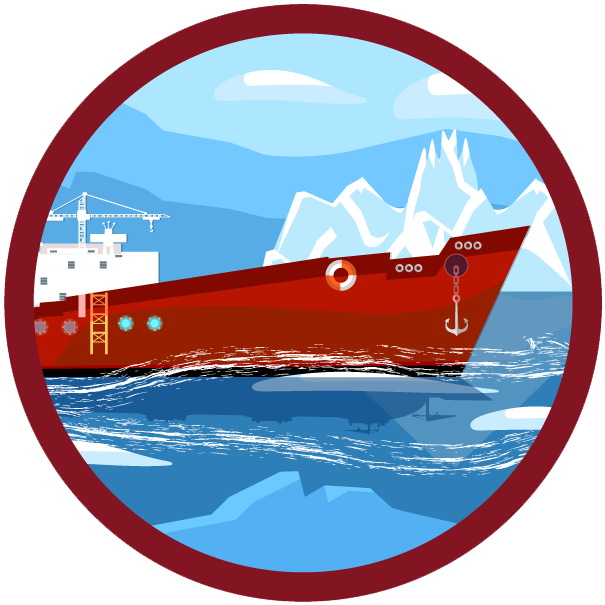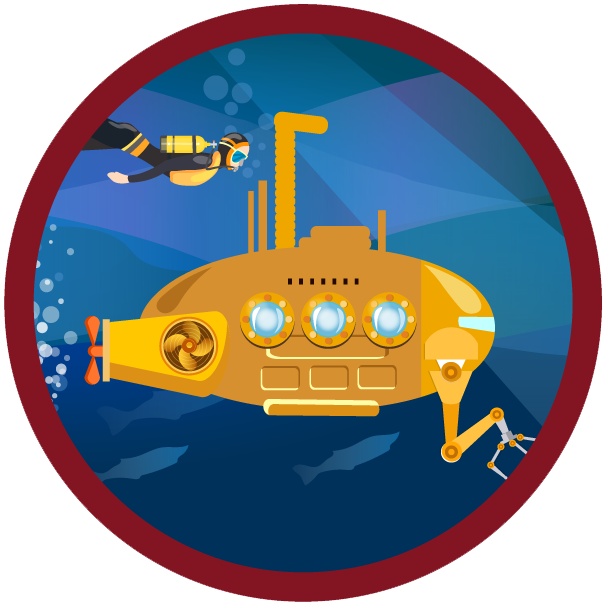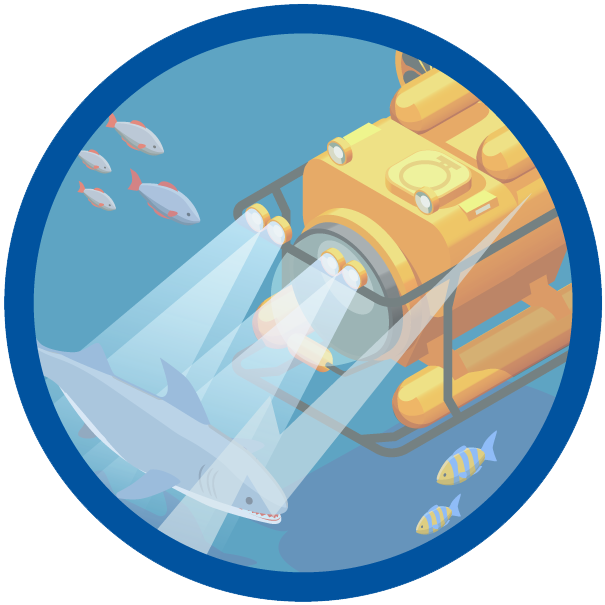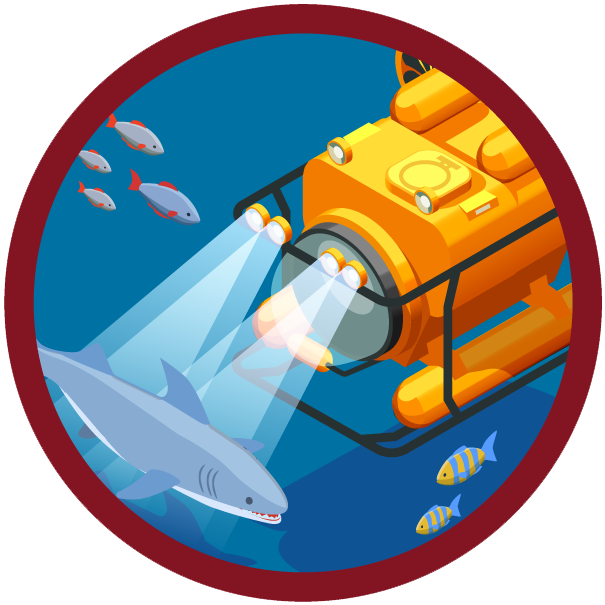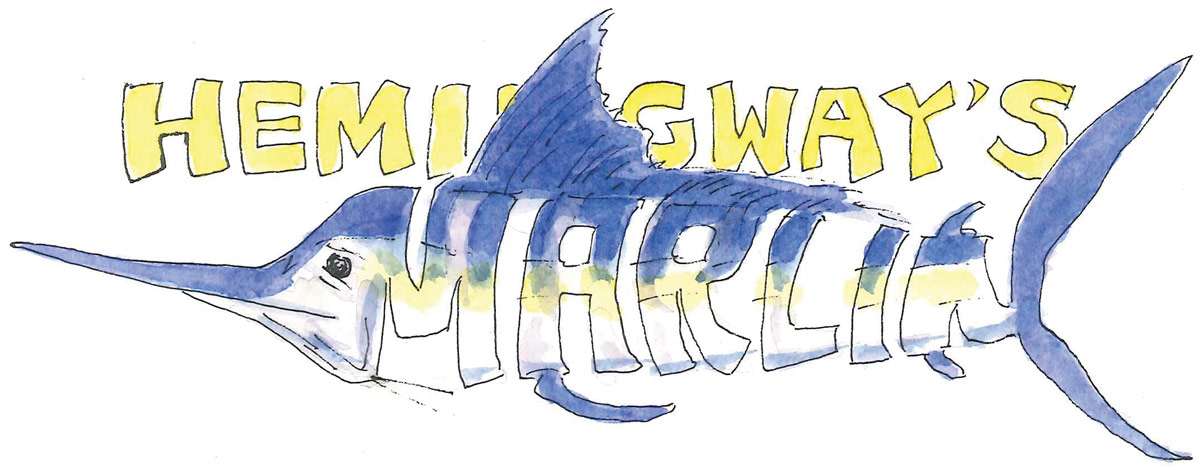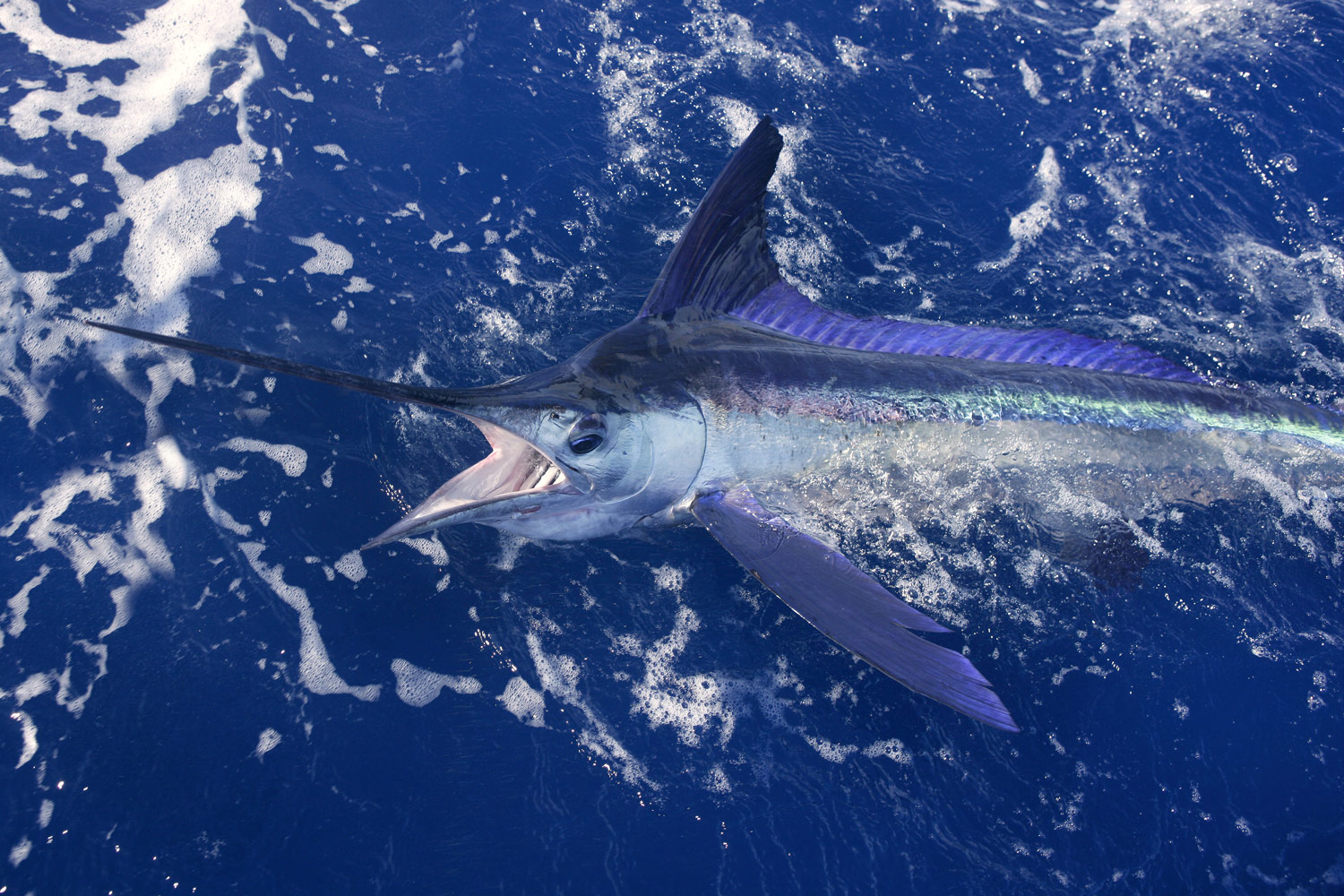
ANIMALS IN SEA HISTORY
Blue Marlin
By Richard King
Ernest Hemingway is now better known for his stories and exploits with big game hunting and bullfighting. Yet it was his novella set on the ocean at the end of his career that earned him the Pulitzer and Nobel prizes. For nearly thirty years, Hemingway was a devoted deep-sea sport fisherman and often spent more than half his year on the waters of the Straits of Florida.
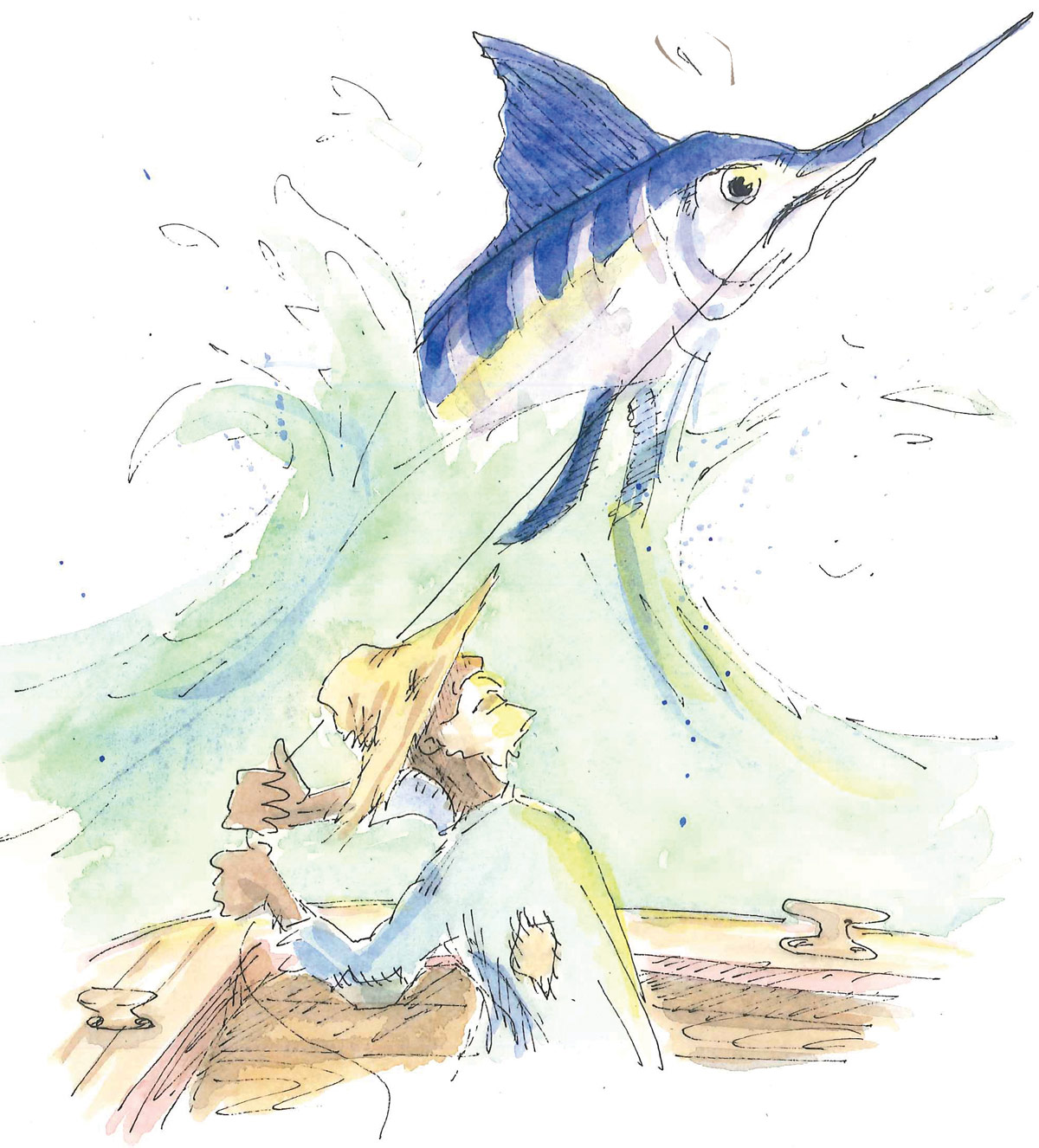 In 1934 Hemingway bought his own fishing vessel, Pilar, which he piloted into the Gulf Stream from his home in Key West, Florida, and then later from Cojimar, Cuba. He fished, patrolled for enemy submarines in World War II, and helped with the observations and collections of marine biologists.
In 1934 Hemingway bought his own fishing vessel, Pilar, which he piloted into the Gulf Stream from his home in Key West, Florida, and then later from Cojimar, Cuba. He fished, patrolled for enemy submarines in World War II, and helped with the observations and collections of marine biologists.
So when Ernest Hemingway published The Old Man and the Sea in 1952, he knew about what he was writing. The novella is the story of Santiago: a poor, once-proud Cuban fisherman who one morning goes much farther into the Gulf Stream than any of the other men. Using only a small wooden boat, fresh bait, and a hand line, Santiago manages to hook an enormous marlin. After three days of struggle and superhuman endurance, the old man kills the marlin with his harpoon. Santiago estimates the fish is over 1,500 pounds.
The old man lashes the fish to his boat to sail it back home to market.
“When he was even with him,” Hemingway wrote, “and had the fish’s head against the bow he could not believe his size. But he untied the harpoon rope from the bitt, passed it through the fish’s gills and out his jaws, made a turn around his sword…and made it fast to the bitt in the bow.”
Santiago went back to the stern to tie up the tail. “He was so big it was like lashing a bigger skiff alongside.” Last issue I wrote about the sharks that so ravage Santiago’s marlin that by the time he rows into the harbor, the fish is only a skeleton. The local men at the beach measure the carcass at eighteen feet from the tip of the bill to the tail.
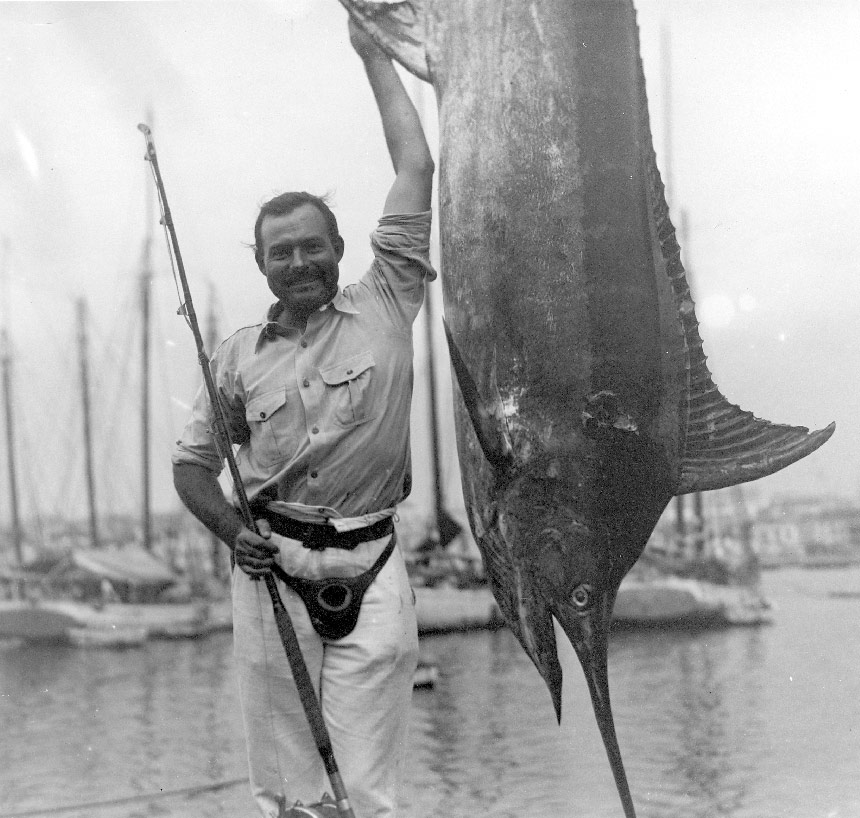 Scholar Susan Beegel has explained that in this time before DNA testing, Hemingway and his scientist colleagues struggled with figuring
Scholar Susan Beegel has explained that in this time before DNA testing, Hemingway and his scientist colleagues struggled with figuring
out which were separate marlin species or just stages in the fish’s life cycle. Today, biologists believe the marlin that Santiago caught must have been a blue marlin (Makaira nigricans), a fish that ranges throughout the world in tropical oceans, with a subpopulation in the Atlantic.
The largest blue marlin caught by a sport fisherman weighed over 1,400 pounds, caught off Brazil in 1992. Hemingway himself held several records for catching marlin in the Gulf Stream. Off the coast of Peru—advising for the movie version of his novel—Hemingway reeled in black marlin that weighed 750 and 910 pounds. Around the same time in nearby waters, a man caught a 1,560-pound black marlin that was 14 feet, seven inches long. (You can see this fish mounted at the National Museum of Natural History in Washington, DC). So Santiago’s blue marlin was certainly gigantic to match his epic fictional struggle, but it was not inconceivable in any informed fish story!
Santiago refers to this massive marlin as acting like a male, but Hemingway and others were unable to determine the gender of this fish in the water in the 1950s. Even though Santiago doesn’t seem to consider it, Hemingway believed that the larger individuals were probably female. Marine biologists now know that nearly any blue marlin over a few hundred pounds is female.
For Santiago, and likely Ernest Hemingway, blue marlin are among the most majestic animals in the ocean. In the novel, the old man remained conflicted about catching these fish for people to eat. One night while he holds on to the fishing line as the giant marlin drags him deeper along the Gulf Stream, Santiago says aloud: “The fish is my friend too. I have never seen or heard of such a fish. But I must kill him. I am glad we do not have to try to kill the stars.”
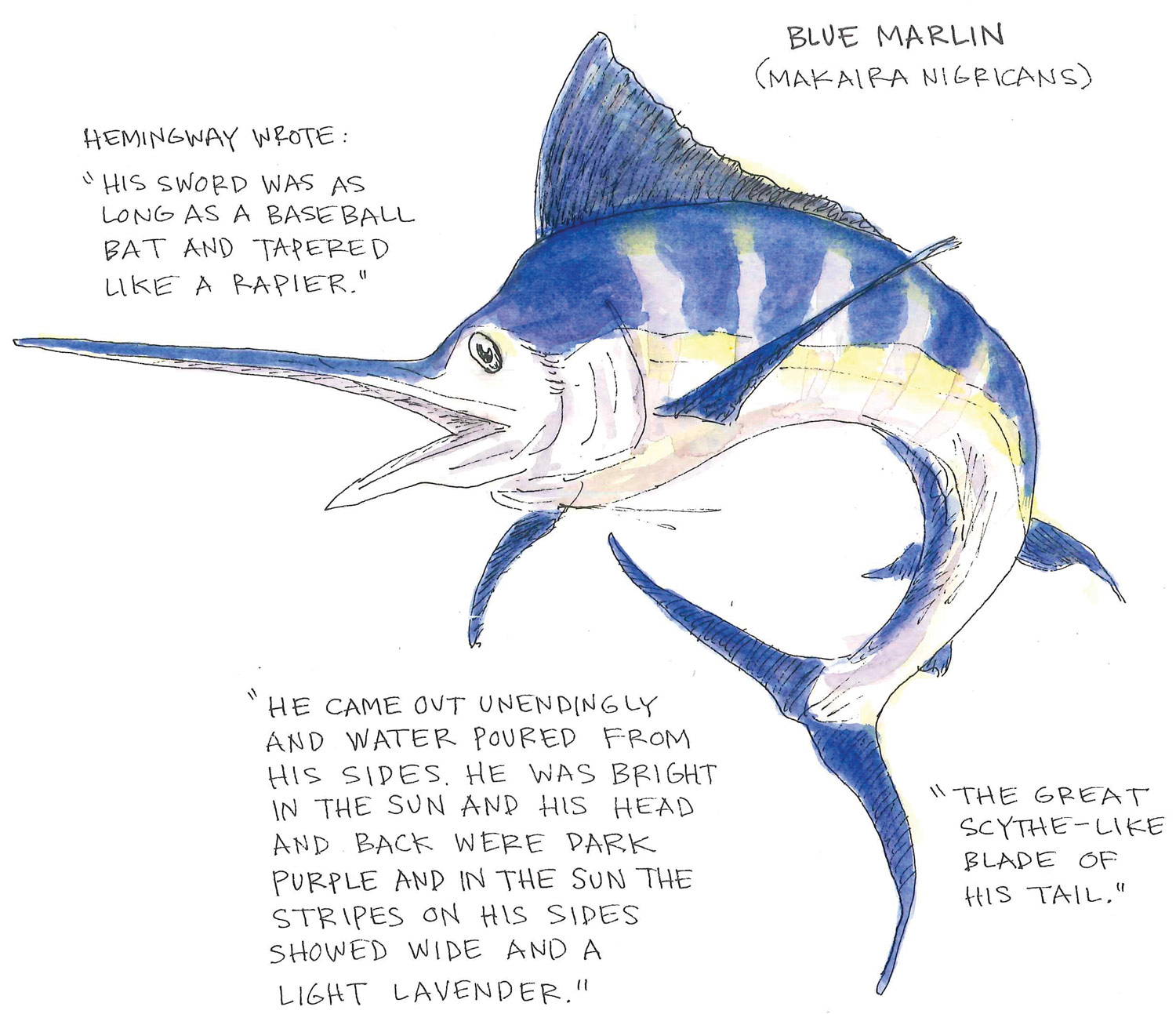
Did You Know?
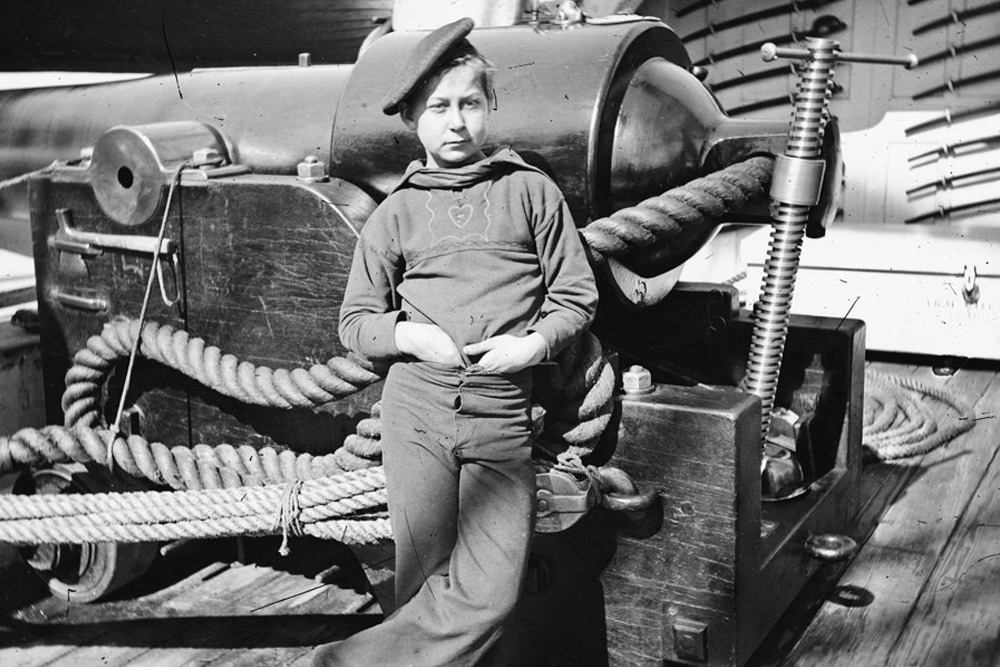
The Age of Sail was said to be the domain of “wooden ships and iron men,” but sailing ships also had boys on their official crew lists.
Today, you have to be 14 years old before you can get a job in most states in the US, but in the Age of Sail both merchant ships and navy vessels signed on boys as young as seven years old as regular members of the crew.
What were these kids doing on board sailing ships?



